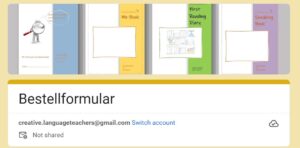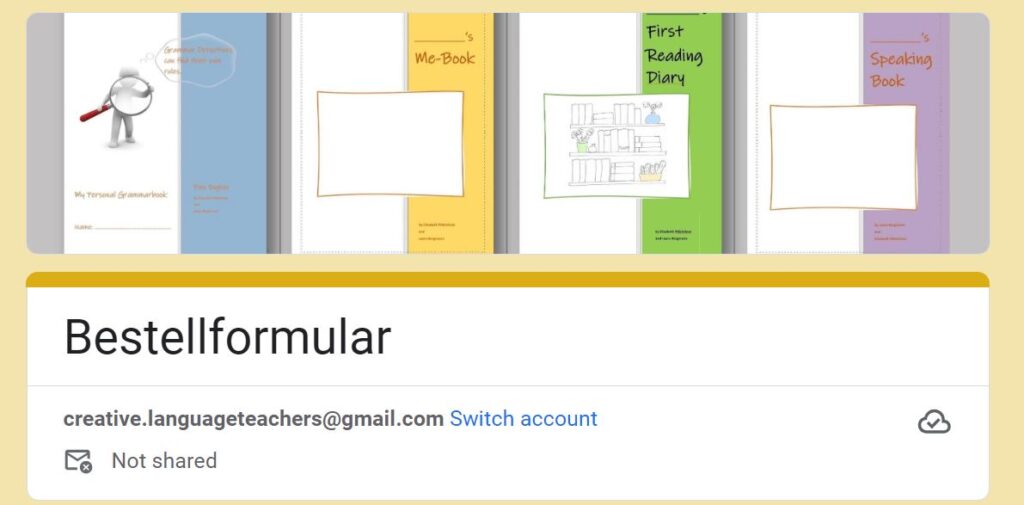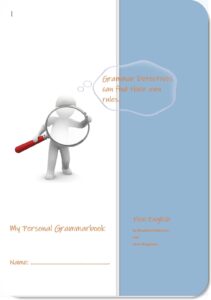 Here you will find a sample version of the grammar book that my colleague and I have produced for our learners. Click on the image to open it.
Here you will find a sample version of the grammar book that my colleague and I have produced for our learners. Click on the image to open it.
For each topic the learners first see some examples in the unit materials. Then they do the grammar CHALLENGE and try to find a rule themselves. This works best if students work in pairs.
As soon as they have found a pattern or a rule, they call the teacher and whisper their hypothesis into the teacher’s ear. It is important that ALL students find their own rule. This may take some time, but it’s time well spent because the learners will struggle and work hard to form their own hypotheses. Neuroscientists would call this “cognitive conflict” — it’s an important step in learning.
Then the students do the “Now it’s your turn” part where they find their own, personalized examples.
The teacher corrects these examples to make sure the kids’ “personal grammar book” does not contain any mistakes and becomes their personalized reference grammar for English.
You can order these grammar books for your learners through the Austrian Schulbuchaktion (Unterrichtsmittel eigener Wahl). Click on the image below to open the order form.

More recently, we have also created a Teacher’s Commentary (Lehrerkommentar) and a Solutions Booklet for our Grammar Detectives.
These booklets are designed to help teachers make the transition from traditional grammar instruction to a communicative meaning into form approach. In the Teacher’s Commentary, we explain our rationale for each activity and give tips to help avoid many common pitfalls along the way.
The Solutions Booklet shows typical sample answers expected for each activity.
You can download the booklets here. Teachers who order a class set of Grammar Detectives will get a free printed copy of the Teacher’s Commentary.
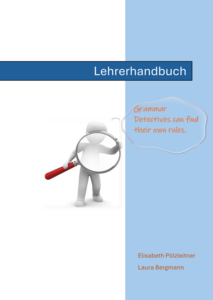 |
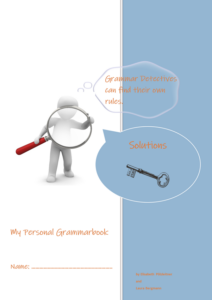 |
For further questions contact us at:
c r e a t i v e . l a n g u a g e t e a c h e r s (at) g m a i l . c o m.
In earlier years my learners produced their own grammar books in a regular notebook by adding the topics as we were going along. In these examples the kids were asked to come up with their own examples and rules, and to draw a “logo” for each grammatical concept (notion). This drawing should help them understand the real meaning or notion that we were working on. In all these examples (old and new) we are following a MEANING into FORM approach. We start with the MEANING that we want to express and then choose the appropriate FORM to do that.
For example: I want to talk about my plans for the upcoming weekend — I need to use the going to form to do this.
I want to say how long I have lived in my house. I need the present perfect tense form to express this concept of duration.
Grammar is learned best when the students find the rules themselves and write their personalized examples. These examples from the learners’ personal lives will help link the new grammatical concepts and forms to the learners’ episodic memory and thus be stored in vast, multidimensional neural networks in their brains.
Have a look at a few examples of personalized grammar books written by lower intermediate learners.
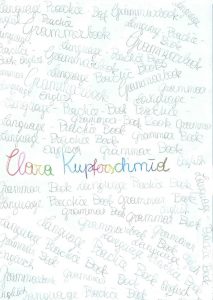 |
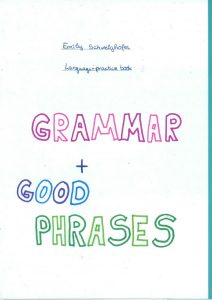 |
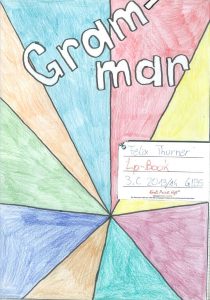 |
 |

